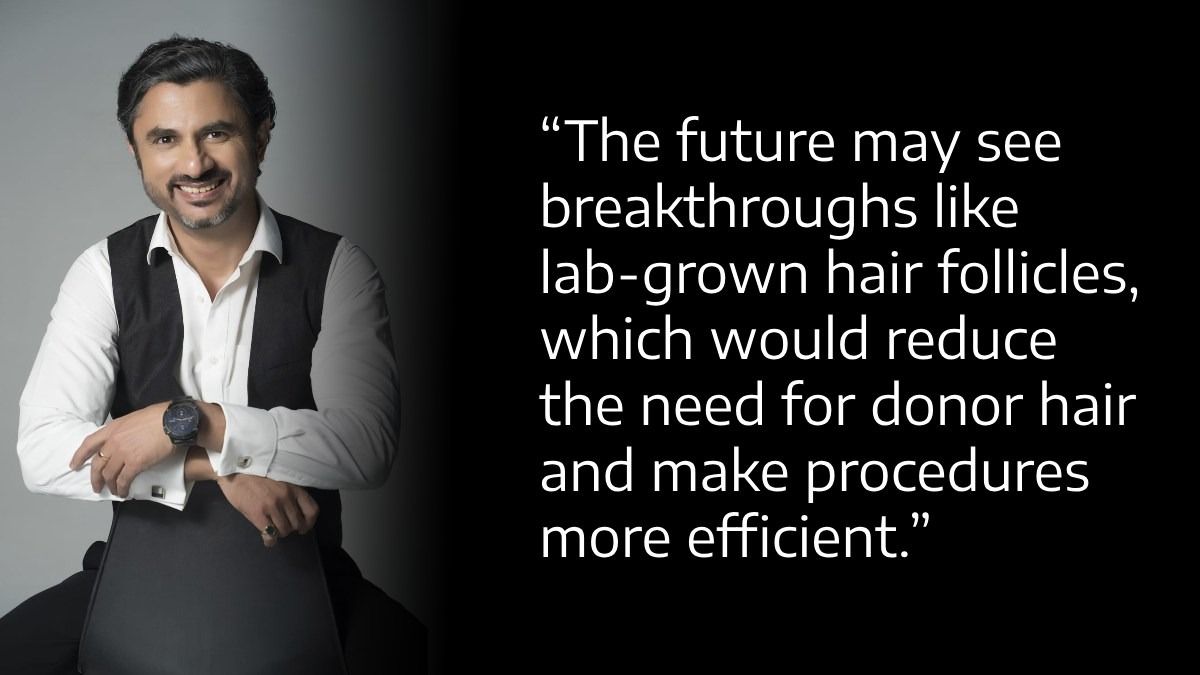
The global hair transplant industry has experienced a remarkable boom in recent years, driven by medical advancements and an increasing focus on aesthetics. However, with this growth comes the responsibility to consider sustainability. While sustainability is often associated with energy conservation and eco-friendly practices, its significance in hair transplantation extends beyond environmental concerns.
Table of Content:-
To understand more about this, we spoke to Dr Mayank Singh, certified plastic surgeon and founder of CROWN. He explains, “Sustainability in hair transplantation is not just about green practices; it is also about ensuring long-term results and preventing the need for repeat procedures.”
Understanding Sustainability in Hair Transplantation

Sustainability in the hair transplant industry does not simply mean using less plastic or switching to renewable energy sources. Instead, it primarily focuses on how long the results of a procedure will last. A sustainable hair transplant should offer results that endure over time, reducing the need for future corrective surgeries.
“If a patient undergoes a transplant in their 20s or 30s and starts losing the transplanted hair within a few years, necessitating another procedure, that is not sustainable,” explains Dr Singh. “True sustainability ensures that patients receive effective, long-term solutions without repeated interventions.”
Also read: Hair Transplants Vs Alternatives: What Became The Go-To Solution In 2024?
Ensuring Long-Lasting Results

Hair loss is a progressive condition, often influenced by genetics and hormonal factors. While hair transplantation is an effective solution, a single procedure may not guarantee lifelong results unless the patient follows proper post-transplant care and complementary treatments.
To enhance sustainability, patients can undergo additional medical treatments such as:
- PRP (Platelet-Rich Plasma) Therapy: Promotes hair growth by stimulating follicles.
- Low-Light Laser Therapy: Enhances hair thickness and strength.
- Stem Cell Therapy & Mesotherapy: Aids in hair regeneration.
- Prescribed Medications: Helps slow down hair loss progression.
These therapies not only support transplanted hair but also prevent further balding, ensuring the success of the procedure.
Another crucial factor in sustainability is the responsible management of the donor area—the region from which hair follicles are extracted. “A skilled surgeon will only harvest follicles from the ‘safe donor area,’ which is resistant to balding,” explains Dr Singh. “Unfortunately, some clinics take hair from unstable areas, leading to transplanted hair falling out later. This defeats the purpose of the procedure and is far from sustainable.”
Also read: Hair Transplants Vs Other Hair Restoration Options: Pros and Cons
Eco-Friendly Clinic Operations

While the primary focus of sustainability in hair transplants is the longevity of results, environmental concerns also play a role. Some clinics are implementing eco-friendly measures, such as:
- Using solar energy to power clinics and reduce carbon footprints.
- Implementing waste management systems to properly dispose of medical waste.
- Minimising disposable plastic usage in surgical procedures.
However, certain aspects, such as the use of electronic surgical devices, OT lights, and motors, remain unavoidable. While energy consumption cannot be entirely eliminated, clinics striving for sustainability are looking for ways to offset their impact through other means.
The Future of Sustainable Hair Transplants

A truly sustainable future in hair transplantation requires a shift in both clinical practices and patient awareness. Surgeons must educate patients on the importance of ongoing treatments that maintain transplant success, while patients should seek ethical and responsible clinics that prioritise long-term results.
Furthermore, biotechnology advancements could revolutionise sustainability in the field. “The future may see breakthroughs like lab-grown hair follicles, which would reduce the need for donor hair and make procedures more efficient,” suggests Dr Singh.
Sustainability in hair transplantation is not just about environmental consciousness, it is about ensuring patients receive reliable, long-lasting results. By focusing on ethical donor area management, post-transplant care, and emerging technologies, the industry can move toward a more sustainable future. Patients, too, must play their part by choosing clinics that prioritise these principles, ensuring that their investment in hair restoration stands the test of time.
Also watch this video
How we keep this article up to date:
We work with experts and keep a close eye on the latest in health and wellness. Whenever there is a new research or helpful information, we update our articles with accurate and useful advice.
Current Version